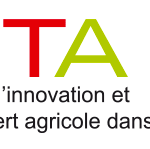
Fostering research excellence
in EU Outermost Regions


Fostering research excellence
in EU Outermost Regions

La Reunion
Guadeloupe
Martinique
Mayotte
French Guiana
Research centers or research group
The Innovation and Agricultural Technology Transfer Networks (RITA) were
set up in late 2011 on the request of the Overseas Inter-Ministerial Council
(CIOM) in 2009. RITA seeks to boost the local development of diversified
animal and plant production in the French overseas departments (DOM).
The networks include stakeholders involved in the DOM Research-Training-
Development project with the aim of co-constructing and conducting
research and development, experiments, demonstrations and transfer
activities to meet locally expressed needs of the farming community.
RITA in practice
For the sugar-cane sector : RITA, together with eRcane, organises initiatives in four working groups :
For horticultural sector : RITA caters for various crops except sugar cane.
It includes eight operational groups working on the following themes :
These first three groups are coordinated by the plant health and agroecological production combined technological unit for the tropical environment (Cirad, Armelfhor, Fdgdon and Anses).
-Pollination
-Endemic species for agricultural use
-Reference networks to diversify plant production
-Formal approval of minor uses
-Skills transfer and training (organised by the Chamber of Agriculture and the DAAF training department)
For the livestock sector : RITA, together with the FRCA unit, focuses on two main subjects : health and fodder. The health subject area comprises five initiatives
-limiting salmonella contamination risks in poultry farming
-improving water quality used in livestock farming
– introducing an epidemio-surveillance network
-improving animal welfare by limiting risks from the “bavites” virus and hemoparasites
-cutting calve mortality rates and improving the cow fertility
National : MAA, MOM, ODEADOM, ACTA, CIRAD, APCA, INRA
Regional : FRCA; CPCS; Qualitropic ;FDGDON; GDS Réunion;
local participants in agricultural development (Chamber of
Agriculture; UHPR; GAB; ARIFEL ;ARP; SICA REVIA; ANSES
AROPFL ;AVIPOLE; ERCANE ;URCOOPA;VIVEA; SICALAIT;
EPL St-Paul ;Tereos; organisations of producers, interprofessional bodies)
The CPR (Regional Steering Committee) is the regional network supervisory body. The CPR co-chaired by the French government and the managing authority.
In Reunion, ex-officio members include the DAAF
the Departmental Council (managing authority) the
Regional Council the Chamber of Agriculture and
the FRCA (for livestock) l’AROP-FL (for horticulture)
the CPCS (for sugar cane).
RITA in practice
For the sugar-cane sector : RITA, together with eRcane, organises initiatives in four working groups :
For horticultural sector : RITA caters for various crops except sugar cane.
It includes eight operational groups working on the following themes :
These first three groups are coordinated by the plant health and agroecological production combined technological unit for the tropical environment (Cirad, Armelfhor, Fdgdon and Anses).
-Pollination
-Endemic species for agricultural use
-Reference networks to diversify plant production
-Formal approval of minor uses
-Skills transfer and training (organised by the Chamber of Agriculture and the DAAF training department)
For the livestock sector : RITA, together with the FRCA unit, focuses on two main subjects : health and fodder. The health subject area comprises five initiatives
-limiting salmonella contamination risks in poultry farming
-improving water quality used in livestock farming
– introducing an epidemio-surveillance network
-improving animal welfare by limiting risks from the “bavites” virus and hemoparasites
-cutting calve mortality rates and improving the cow fertility
National : MAA, MOM, ODEADOM, ACTA, CIRAD, APCA, INRA
Regional : FRCA; CPCS; Qualitropic ;FDGDON; GDS Réunion;
local participants in agricultural development (Chamber of
Agriculture; UHPR; GAB; ARIFEL ;ARP; SICA REVIA; ANSES
AROPFL ;AVIPOLE; ERCANE ;URCOOPA;VIVEA; SICALAIT;
EPL St-Paul ;Tereos; organisations of producers, interprofessional bodies)
The CPR (Regional Steering Committee) is the regional network supervisory body. The CPR co-chaired by the French government and the managing authority.
In Reunion, ex-officio members include the DAAF
the Departmental Council (managing authority) the
Regional Council the Chamber of Agriculture and
the FRCA (for livestock) l’AROP-FL (for horticulture)
the CPCS (for sugar cane).